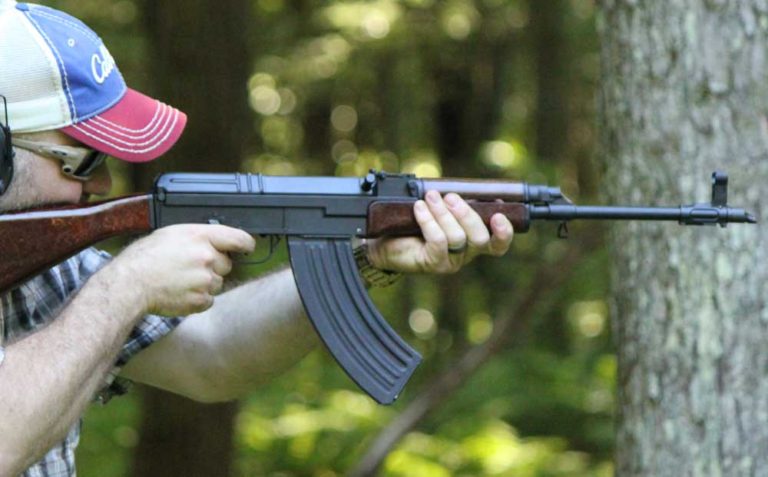
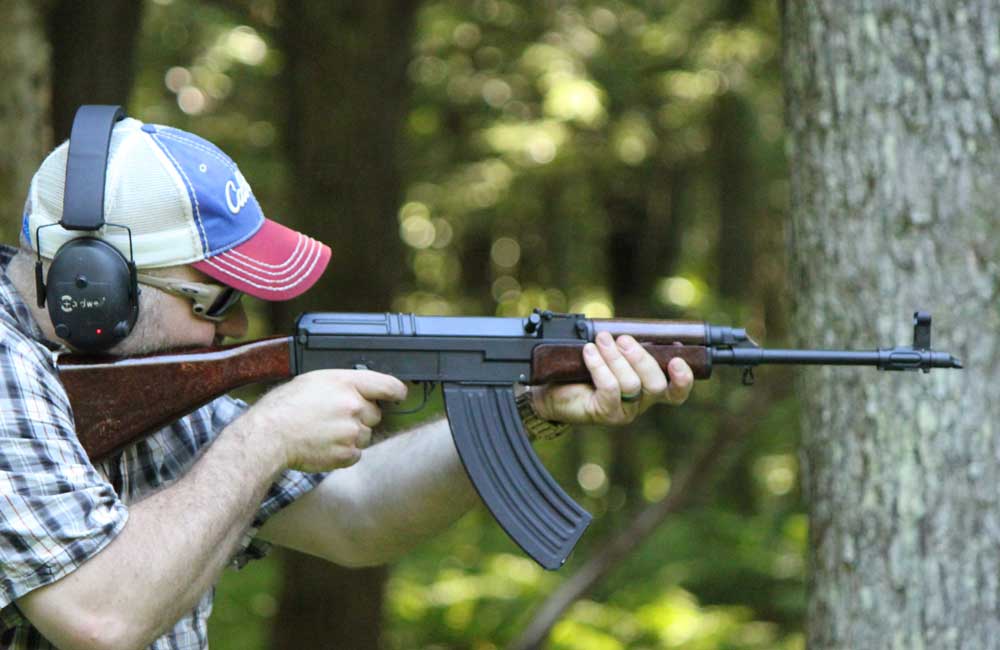

While most of the Warsaw Pact countries walked in lockstep with Soviet Union weapons designs, Czechoslovakia went its own way. One of the results was CZ's Vz 58 rifle.
This gem is nearly as rugged as the AK and on many design points superior to the better known battle rifle from behind the Iron Curtain.
To the casual observer, the 58 looks like a Soviet Kalashnikov. The magazine has the same banana-shaped silhouette. The grips have a similar shape, as does the stock. And the front grips and barrel also have a similar profile. Internally, though, they couldn’t be more different.
The Samopal (Sa) Vz 58 was designed by Jirí Cermák starting in 1956, and the Czech army adopted it in 1958. It was used by the Czechoslovakian army until the dissolution of Czechoslovakia on January 1, 1993. After that it was in use by the Czech and Slovak armies, and continued until the Bren 805 replaced it in the Czech army (though it is still in use by some reserve units). The Slovak Army continues to use it as the standard service rifle, mostly due to financial reasons, though they are also looking at the Bren 805 to replace it eventually (they have purchased 688 Bren 805s).
It is a gas-operated, magazine-fed, selective-fire weapon. It has a short stroke piston gas operating system. It uses breech-block locking systems that include a separate tilting locking piece. In all, the bolt assembly consists of a bolt carrier, bolt, locking piece and striker. The top surface of the bolt carrier (actually the top two surfaces, because it’s two surfaces of the triangle-shaped (loosely) bolt carrier) is exposed, and the cocking lever is machined into it.
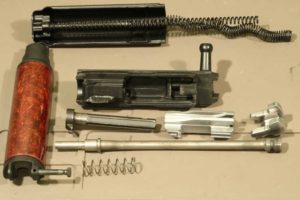
What serves as the receiver cover is also the housing for the spring units; both the return spring and striker spring are held in place by their guide rods, which are part of the return mechanism base.
The firing group is an interesting design as well. Unlike most military assault rifles and their civilian semi-auto counterparts, which are hammer-fired, the Vz 58 is striker-fired. As the bolt carrier group moves forward and the bolt goes into battery, the striker nose catches on the sear, holding it in place, well behind the bolt. When the trigger is pulled, the sear drops out of the way and the striker spring (which as I mentioned is attached to the receiver cover) pushes the striker forward and into the firing pin, firing the cartridge.
It uses a machined receiver, unlike the original AK design which is stamped (the AK would later change to a milled receiver, and then later back to stamped). The tolerances on the Vz 58 are far tighter than on Russian-made AKs.
The Vz 58 also has a last-round bolt hold open, though of an unconventional design. A rib, or fin, runs the length of the magazine, and inside it is a knob offshoot from the magazine follower. When a magazine is inserted into the rifle, the bolt catch button on the rifle fits inside the rib on the magazine. Upon the last round being fired, the magazine follower knob inside of the rib presses against the bolt catch button, holding the bolt hold open.
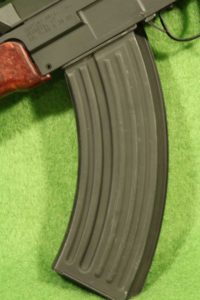
When the magazine is inserted and the last round has been fired, the magazine follower knob will press against the button and hold the bolt to the rear.
The magazine is lighter than the AK mag, which can be good or bad, depending on your point of view. It’s not as indestructible as an AK mag, but it does cut down on some of the extra weight. It’s more akin to an AR15 USGI magazine.
It uses a more conventional AR15-like selector switch than does the Kalashnikov, but the position of it is horrible. Instead of mounting it on the left side of the receiver to be manipulated by the thumb of the shooting hand, it’s on the right side, to be manipulated by the trigger finger. This is naturally going to slow down engagement time, as the finger has to go from the selector switch to the trigger. It’s also not that comfortable. Modern practice is, when not firing the weapon, the trigger finger is held straight, outside of the trigger guard. This would place the trigger finger just over the lever portion of the selector. Over the long haul, that’s not comfortable.
A short stroke piston gas system — like the Vz 58 — is one in which the piston is not attached to the bolt carrier, and when the weapon is fired, it only moves an inch or two, using a short, strong burst of energy to transfer its momentum to the bolt. This kicks the bolt out of battery, sending it on it’s way where the recoil forces of the cartridge firing do the rest to cycle the bullet. The short stroke system is generally made up of two or three parts, aside from the bolt carrier.
Compare that to a long stroke piston gas system, in which the piston is part of the bolt carrier group and it moves as one unit throughout the entire reloading process. The Kalashnikov is a prime example of a long stroke system.
The downside to the long stroke piston gas system is that there is a lot of extra mass that is moving, which increases recoil and also slows the cyclic rate of fire (though that only affects those shooting select-fire weapons in fully-automatic mode). The short stroke is generally easier to make; however, the downside is that it has more moving parts.
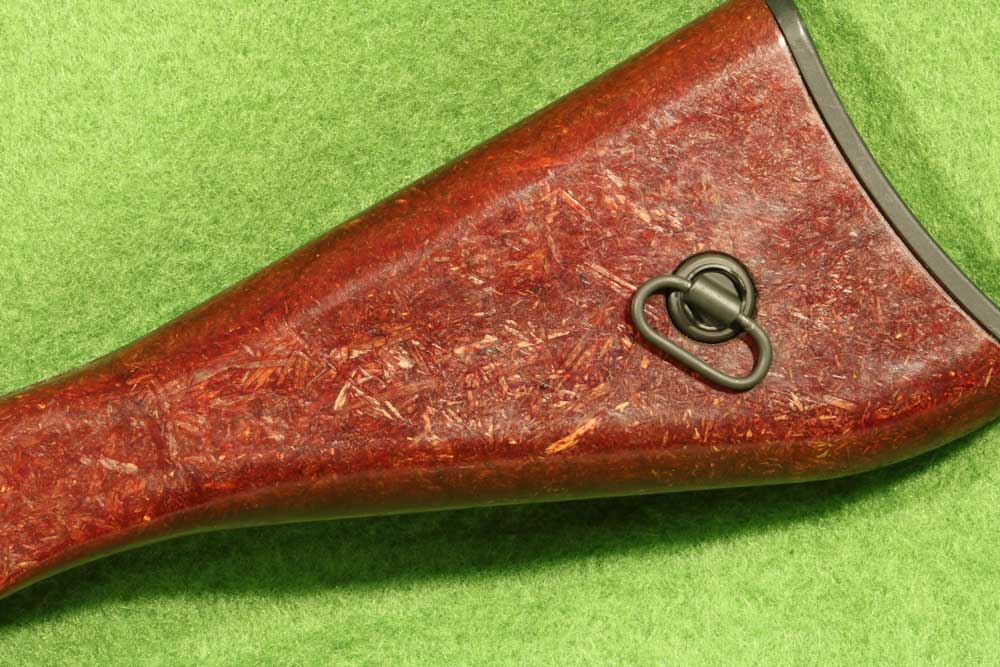
Of all the Cold War communist bloc weapons, this is my favorite. My fascination with it started from a shallow perspective — I thought the furniture looked pretty cool, in a communist chic kind of way. I mean, who else would use wood chip impregnated plastic resin?
I really like the simplicity of it, and believe it is a superior weapon to the Kalashnikov. It has higher build quality, is more accurate, and I believe is more reliable. Now, I’ve had one friend tell me that over in the sandbox, he saw allies having issues with the Vz 58 getting sand in it, due to the open receiver design. I can’t verify this, however, as I wasn’t there first hand.
Where it loses out to the Kalashnikov, however, is despite being fielded to some degree by over 20 different user nations, it has never seen large scale use in major combat operations. It’s just not as combat proven as the AK. It’s seen skirmishes and it’s seen limited use in battle, but mostly non-linear combat operations. Never one large army equipped with it, going into battle against another country. It does continue to see service in Iraq and Afghanistan.
This article is an excerpt from the Gun Digest Book of CZ Firearms.

Next Step: Get your FREE Printable Target Pack
Enhance your shooting precision with our 62 MOA Targets, perfect for rifles and handguns. Crafted in collaboration with Storm Tactical for accuracy and versatility.
Subscribe to the Gun Digest email newsletter and get your downloadable target pack sent straight to your inbox. Stay updated with the latest firearms info in the industry.

![Best Concealed Carry Guns In 2025 [Field Tested] Wilson Combat EDC X9S 1](https://gundigest.com/wp-content/uploads/Wilson-Combat-EDC-X9S-1-324x160.jpg)


![Best 9mm Carbine: Affordable PCCs [Tested] Ruger Carbine Shooting](https://gundigest.com/wp-content/uploads/Ruger-Carbine-Shooting-100x70.jpg)
![Best AR-15: Top Options Available Today [Field Tested] Harrington and Richardson PSA XM177E2 feature](https://gundigest.com/wp-content/uploads/Harrington-and-Richardson-PSA-XM177E2-feature-100x70.jpg)
